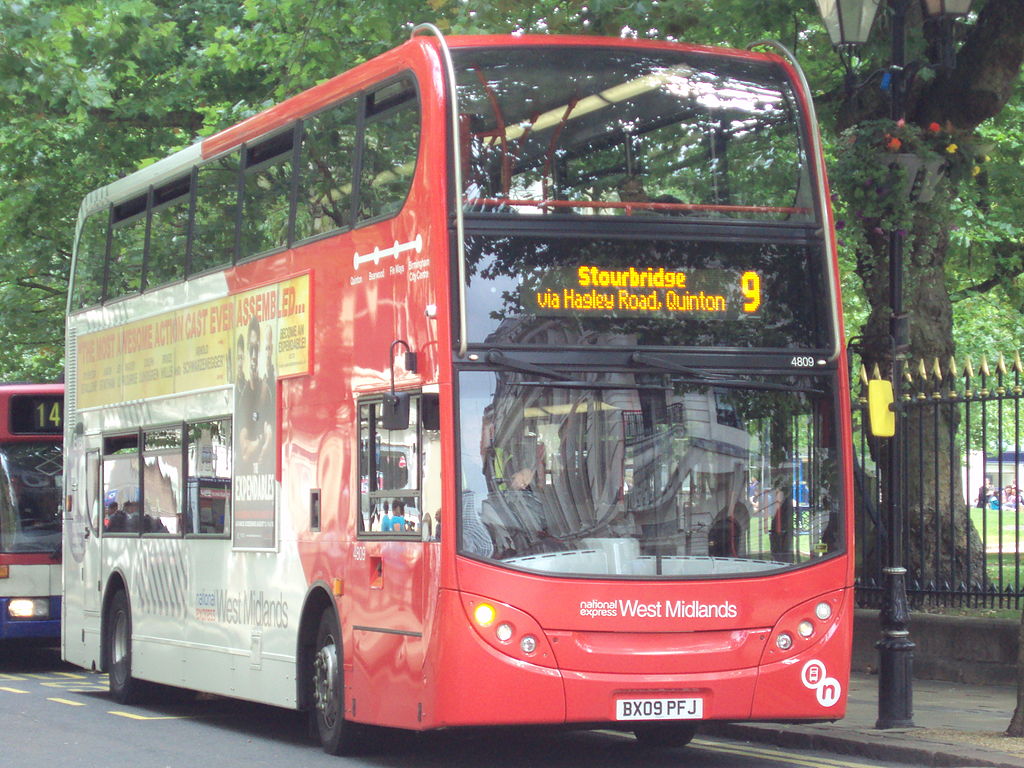
Magda Cepeda-Zorrilla and Donald Houston discuss how transport priorities have changed following HS2. They argue that buses are good value for taxpayers, important to those who do not have any other form of transport and can foster inclusive economic growth.
In England, public support for bus operators and users totalled £3.1 billion in 2021-22 – compared to £25.1 billion for rail in the same year.
This is despite local bus trips outnumbering journeys made on the national rail network by 3:1 (3.1 billion bus trips versus 1.0 million rail journeys). That means the average rail journey costs the taxpayer around 25 times more than the average bus trip. Most bus trips are much shorter than rail trips and rail is more energy efficient than bus – so in some ways, this is an unfair comparison – and we are certainly not arguing that public spending on rail should be reduced. Rather, we are arguing that – even a substantial – increase in support for buses would be dwarfed by levels of spending on rail.
HS2
HS2 between London and Birmingham alone is budgeted to cost £45 billion (at 2019 prices) – and this is expected to rise due to cost overruns (plus inflation, of course). The planned northern leg from Birmingham to Manchester that was axed in October 2023 saved £36 billion, which the government has pledged to redirect to other transport projects – mainly conventional rail but also some significant investments in bus infrastructure and subsidies.
This is all to be welcomed (except, perhaps, the axing of HS2 north of Birmingham) but many of these schemes were already being planned and may have been funded, so the extent to which the £36 billion represents genuinely new money is a moot point.

At the end of September 2023, Roads Minister Richard Holden confirmed allocations for 64 local authorities across England from the £80 million (err…0.2% of the £36 billion ‘released’ by scaling back HS2) funding to improve and protect bus services, although other bus investments around the regions have also been proposed with recycled HS2 money.
The funding is aimed to continue to help lower fares and improve bus reliability and punctuality while preventing service reductions. According to the Department for Transport (DfT), the funding follows the first £80 million bus service improvement plans (BSIPs) + investment for 2023 to 2024, and the previous £1 billion from the first BSIP funding announced in 2022. This fund comes on top of a further £140 million announced in May from the extension of the Bus Service Operators Grant (BSOG), taking the total to £300 million into 2025.
The welcome potential injection of investment and enhanced subsidies for local buses offers a moment to reflect on how local bus services are supported through public spending. We therefore now turn to look at the characteristics of the passengers and who benefits from the use of bus services; the importance of a balance between subsidy to operators vs to people and how bus subsidies work (concessionary fares, local bus grant, socially tendered routes).
Type and characteristics of the passengers
There are two broad passenger types, concessionary and non-concessionary passengers. Concessionary passengers are either elderly or disabled people (free to travel anywhere in England since April 2008).
Free travel for young people is only available in the local authorities where such travel schemes exist, which is relatively rare in England and Wales where only 18 local authorities provide financial support to subsidise children and young people’s fares.
If you live in Scotland and are 5-21 years old you are eligible for a card giving you free bus travel. Children under 5 years old already travel for free on buses and don’t need a card. In London, children under 5 travel free with a fare-paying adult and children aged 5-10 travel free on all the transport services with a Zip Oyster photocard. Supporting children and young people to use buses in England is not likely to happen on any substantial scale. In 2018, the then Transport Minister, Nusrat Ghani, said that there were no plans to implement a national bus concession for young people and this was reinforced by the national bus strategy for England in 2021 Bus Back Better, stating that people who are not disadvantaged will not be funded.

By 2022, 2.8 billion passenger journeys were made by local buses in England. Of those, 8.7 million were older and disabled concessionary travel passes (90% for older people and 10% for disabled people) and 555 million concessionary bus journeys. Across England, this figure breaks down as:
- 229 million in London
- 132 million in metropolitan areas
- 194 million in non-metropolitan areas
According to the National Travel Survey in 2022 (NTS 2022) for all age groups, females have shown a decline in bus trip trends over the years, whereas trends by males have been more stable. However, in 2021, on average, women made more local bus trips than men at 30 and 23 trips per person per year respectively.
Local bus services are particularly important for those without access to other forms of transport. According to the annual bus statistics, “in 2021, on average, people in households without access to a car made over 5 times as many local bus trips than those with access to a car (87 trips per person versus 15 trips per person respectively). Also, data from 2021 show that people in the lowest real income quintile made 44 local bus trips on average, more than any other income quintile, while those in the highest income quintile made the least (16 local bus trips on average).
Importance of a balance between subsidy to operators vs to people
It is important to have a balance between subsidy to operators vs to people. The importance for people lies in the age and economic situations of the passengers. For instance, bus services are used more by the young and those over the age of 70 and are used more in towns and cities.
For both males and females, those aged 17 to 20 made the most bus trips in 2022 with 92 and 105 trips per person respectively. In addition, women and girls are more reliant on public transport and active travel modes. Bus services are especially important because the bus network links neighbourhoods together and allows shorter-distance travel and multi-stop trips.
The importance of the subsidy to operators lies in maintaining services and the economic impact of the employment generated by the sector. Local bus operators in England employed an estimated 88,000 full-time equivalent staff, including maintenance and admin staff, as of March 2022. Stagecoach Group, for instance, employs around 23,000 people and operates bus, coach and tram services in the UK.
Also, better connectivity and access to transport options have an impact on the wider economy. In 2016, a study stated that the areas with better connectivity had lower levels of deprivation. A key finding from a report on violence against women and girls showed that both women and girls do not take up opportunities such as employment and training due to their limited transport options being limited.
Bus service description and subsidies received
Since the sector was deregulated in England (outside of London) in 1986, the majority of bus services are offered by private companies. Services may be run on a strictly commercial basis or may receive local government subsidies. London services are operated by private companies but regulated by Transport for London (TfL). Traditionally, central and local governments have provided support for local bus services as payments for supported services (DfT, 2021).

The three main sources of public subsidy to local bus operators are (DfT,2022):
- Tendered routes – local authority pays a subsidy to an operator to run a service on a non-profitable route or time of day (e.g. to out-of-town hospitals on Sundays) – these are allocated via a tendering process, usually going to the lowest bidder.
- Concessionary fares (concessionary travel reimbursement) – the traveller goes free and the operator is reimbursed by the government (so operators need to record how many concessionary travellers they carry); people over 60 years and disabled people get concessionary travel in off-peak times – Scotland extended it to young people but I’m not sure if England plans to do this.
- Bus Service Operators Grant (BSOG) – fuel tax rebate.
Due to the COVID-19 Bus Service Support Grant (CBSSG) which ran from April 2020 to August 2021 and then the Bus Recovery Grant (BRG) introduced in September 2021 to keep services running that may have otherwise operated at a loss, or not operated at all.
Summary
Buses are good value for taxpayers’ money. Local bus services are particularly important for those without access to other forms of transport, with those who do not have access to a car making around 25% of all of their travel by bus. Buses, are used more by the young and those over the age of 70 and are used more in towns and cities. Accessible and affordable bus services are very important.
In 2016, a study stated that the areas with better connectivity had lower levels of deprivation. Also, access to bus services allows people to access different services and for a wide range of reasons such as to commute to and from work, to get to and from school and college, to go shopping, visit the doctor, and for other social activities. In short, bus services are good for promoting inclusive economic growth.
This blog was written by Dr Magda Cepeda Zorrilla, Research Fellow and Donald Houston, Professor of Regional Economic Development, City-REDI / WMREDI, University of Birmingham.
Disclaimer:
The views expressed in this analysis post are those of the authors and not necessarily those of City-REDI, WMREDI or the University of Birmingham.
